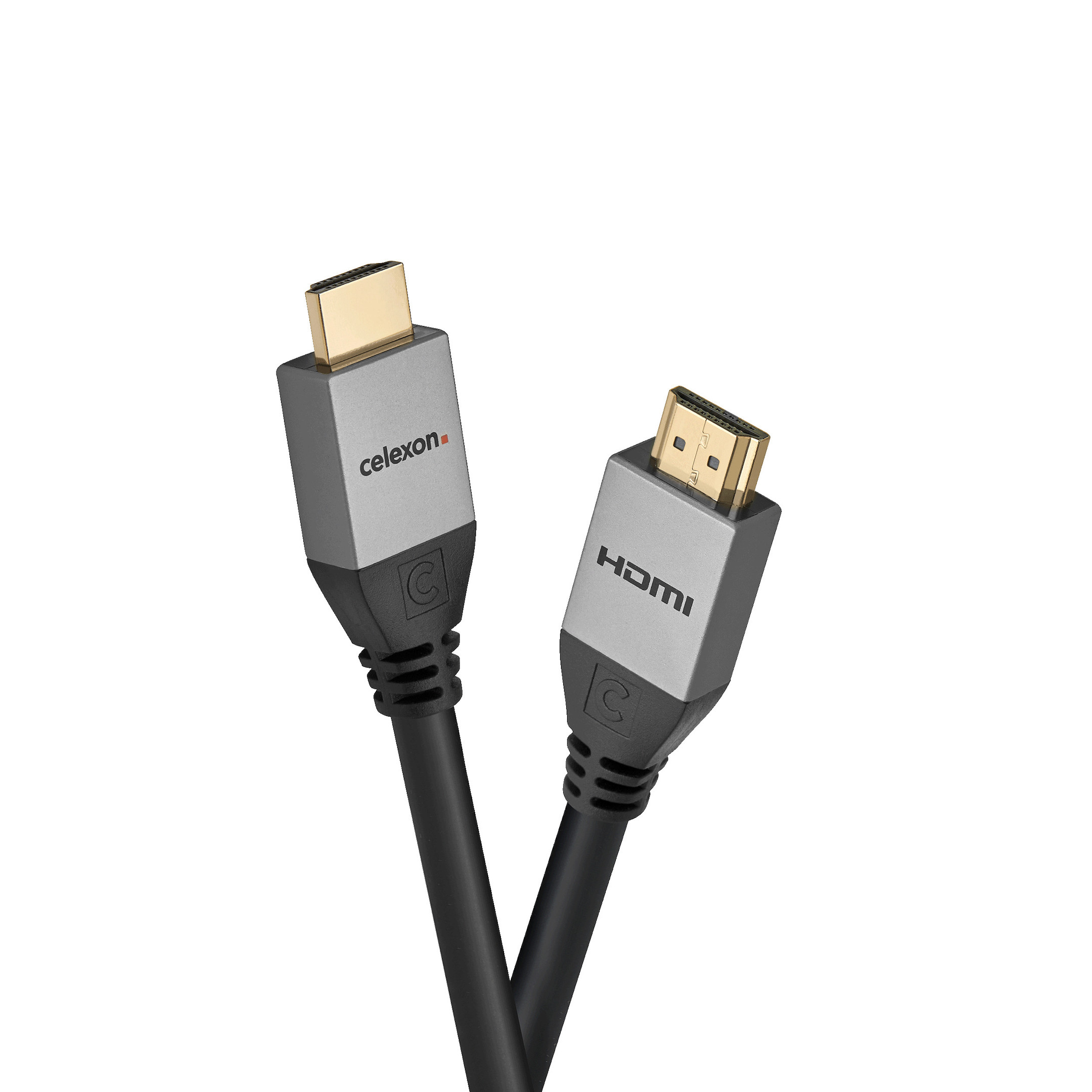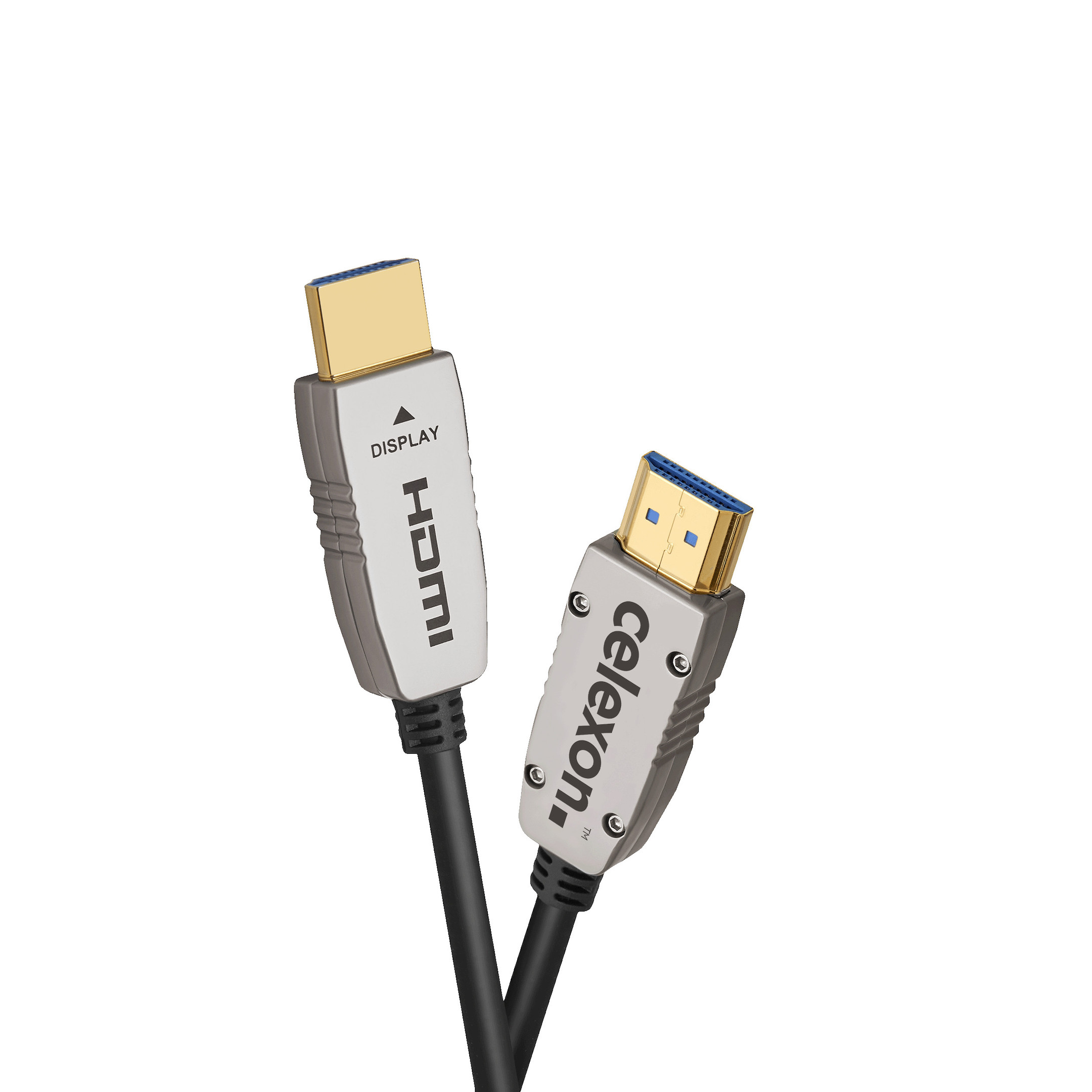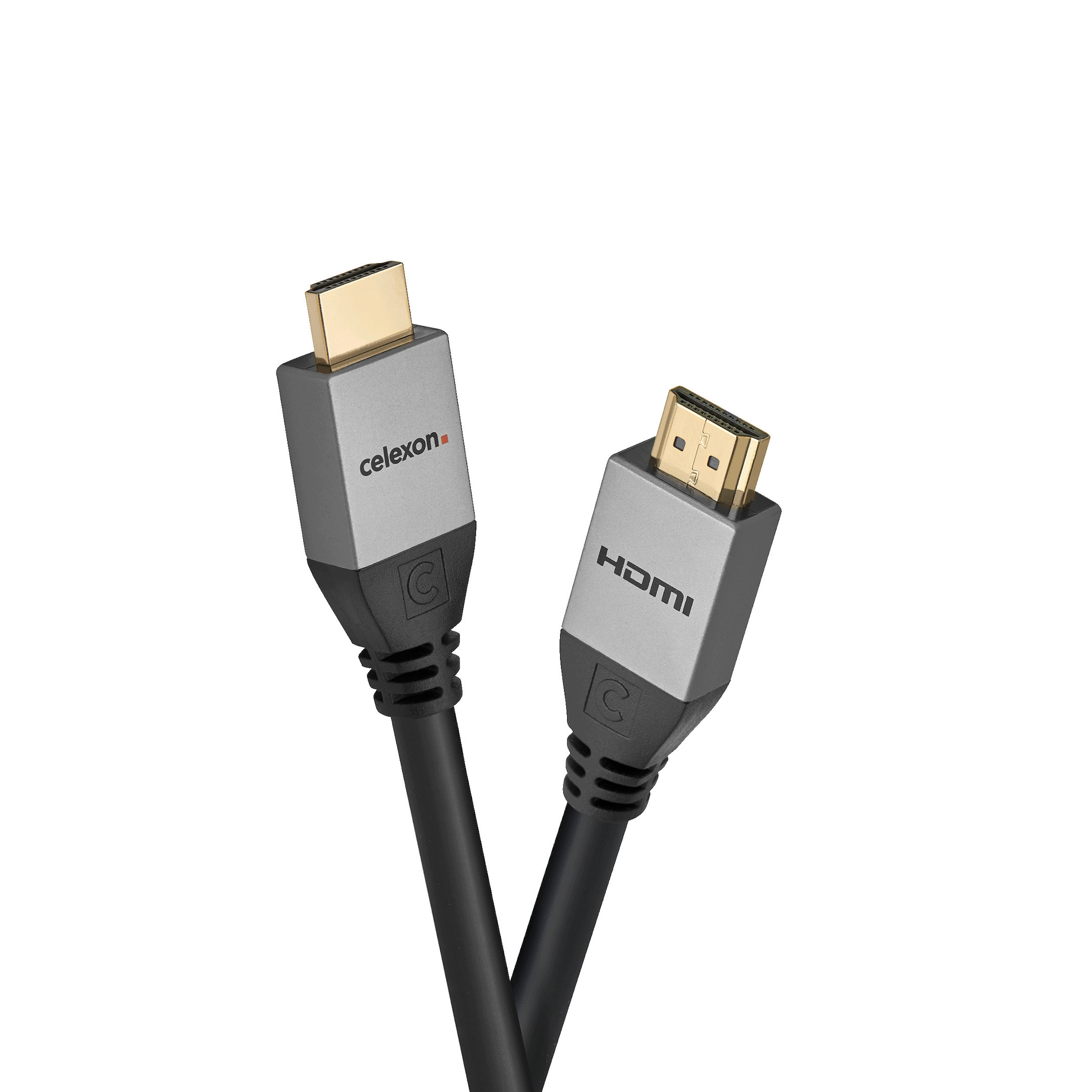

































£512.76*
- Resolution 1920 x 1080 Full HD
- Max. Brightness 400 cd/m²
- Panel type VA
- Contrast Ratio 1,200 :1


Frequently purchased together
Product information
Experience the following highlights:
- Resolution: 1920 x 1080
- Full HD signage display
- Integrated speakers (10 W, 2-channel)
- Dust protection IP5x
- Temperature sensor
- WLAN (802.11ac) & BT 5.0
- Integrated MagicINFO Player
More possibilities for your business

The QMC Series combines advanced professional features, optimised setup and maintenance, and a stunning design to enhance any business environment. With innovative and efficient features, the QMC Series supports more effective collaboration and rich content presentations in new formats to help your business reach new goals.
Lifelike colours
Dynamic Crystal Color

Enjoy flawless colour reproduction with Dynamic Crystal Color. This allows viewers to enjoy a wider colour spectrum with up to a billion shades of colour.
Unmirrored display for good visibility
No glare
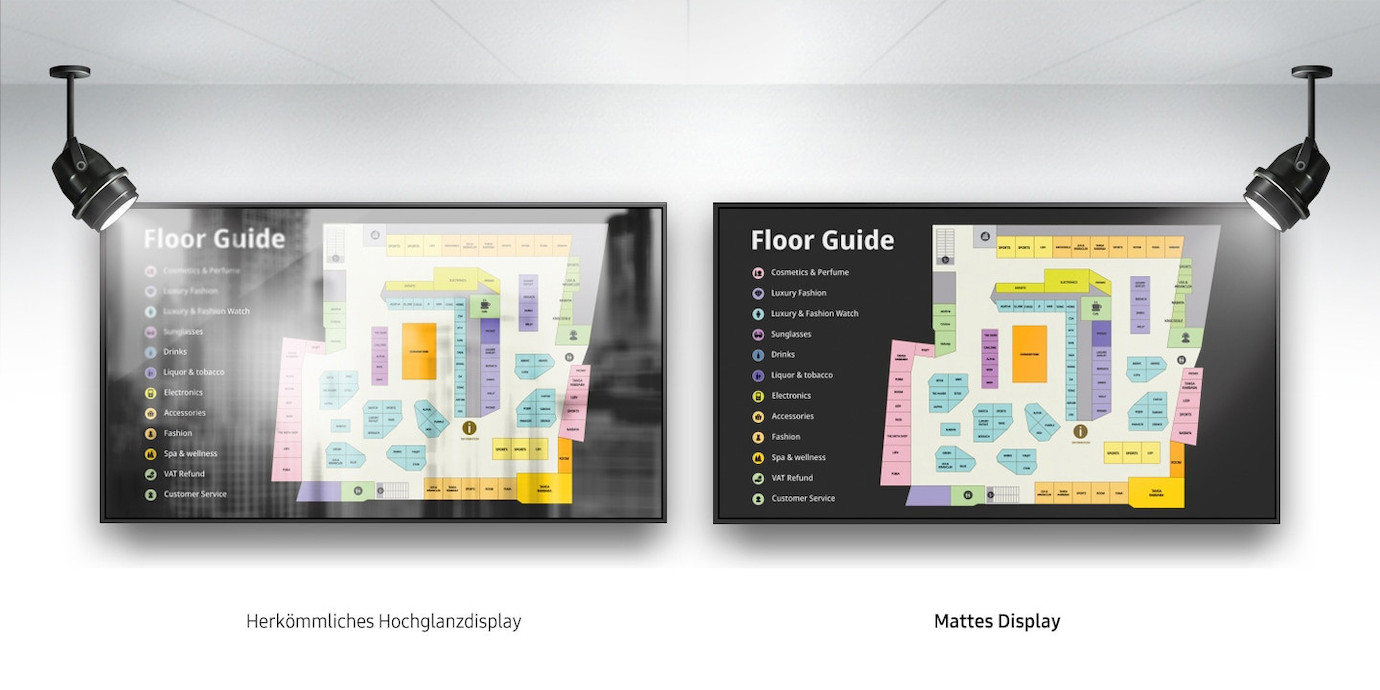
The QMC series has anti-glare displays that enable optimum viewing from any angle. This means that important content can be displayed without reflections in almost any lighting situation and in almost all areas, such as service information in airports or railway stations.
For more screen space
Slim and symmetrical design
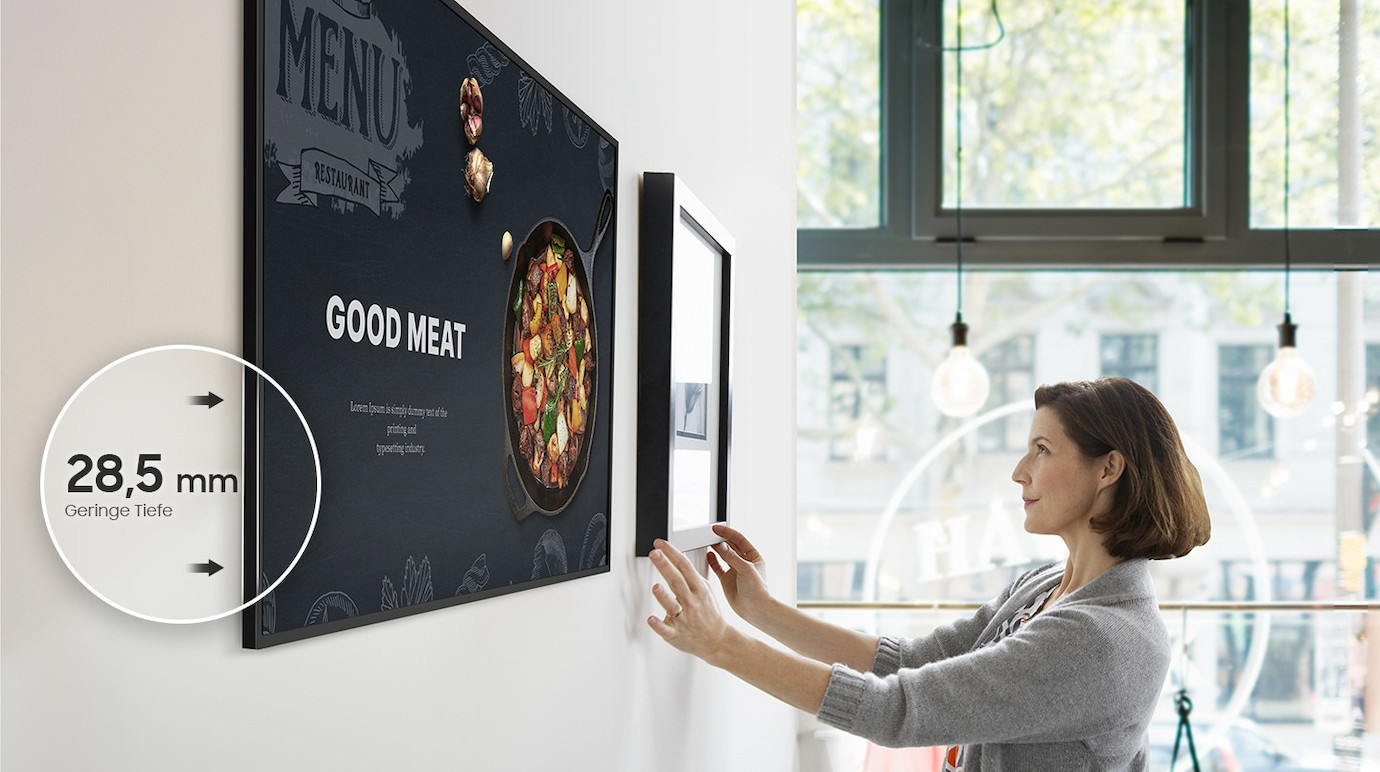
Thanks to the slim and symmetrical design of the UHD 4K signage display, it is even easier to mount on the wall and offers a secure and seamless installation. In addition, we have redesigned the position of the power connection on the display so that it is flush with the wall.
Everything in view
Clean cable routing
The QMC series can be perfectly integrated into any business environment. Thanks to the clean cable routing, the screen draws attention to what is shown on the display and not to the connected cables.
Easy teamwork
SmartView+
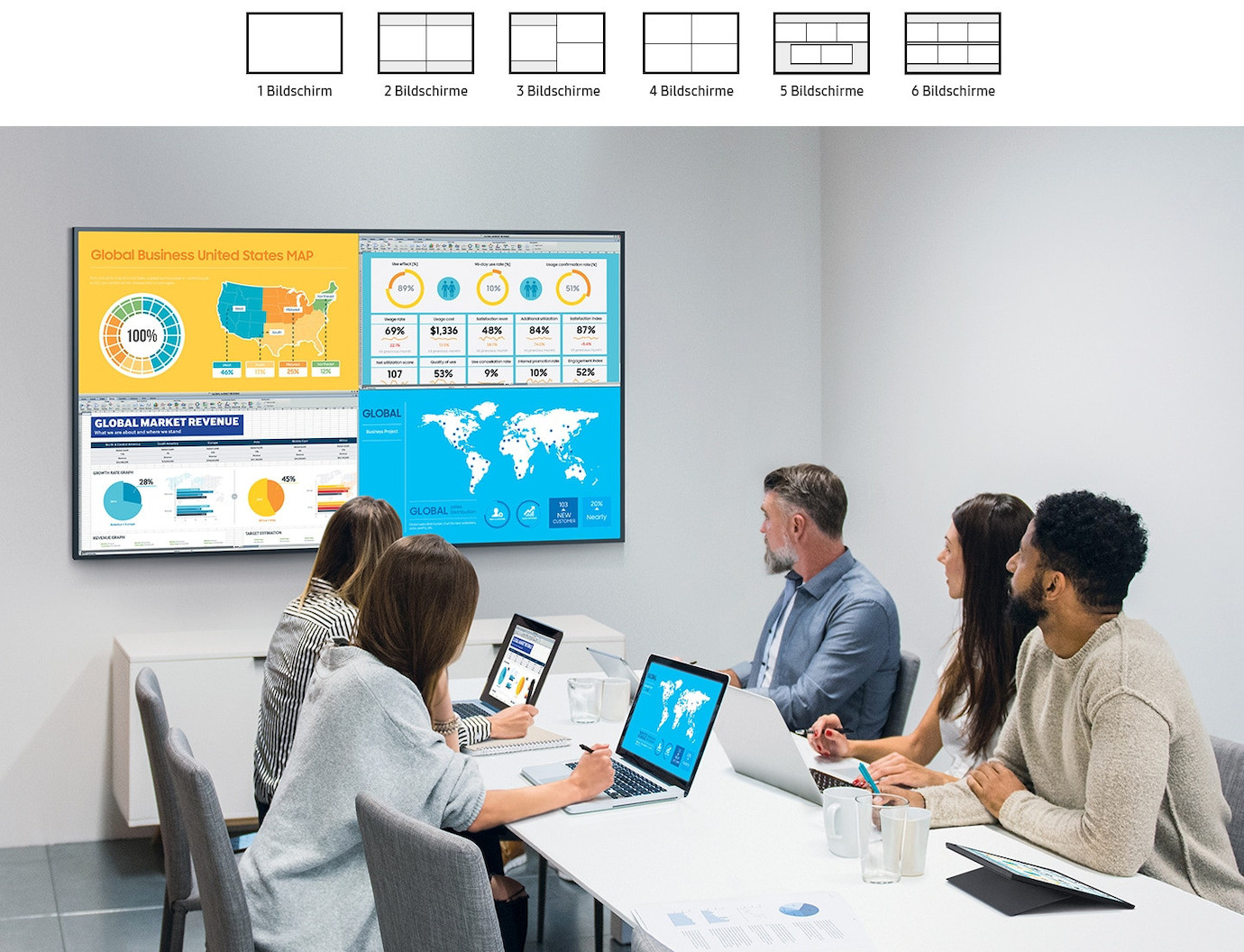
SmartView+ enables wireless screen sharing without cable connections, supporting teamwork in a new way. Users can now activate the screen sharing feature at the start of a meeting, allowing the meeting administrator to quickly switch between screens with one click.
Keep meeting room settings
Custom Home
Custom Home is designed to simplify meeting room management and allows administrators to lock specific meeting room settings to prevent users from changing settings between meetings. Now conference rooms can function as intended throughout the day without error, allowing IT to focus on other tasks.
Simplify calibration between screens with mobile app
Smart Calibration
Ensure complete brand consistency on any screen, anywhere. With the Samsung Mobile App, Smart Calibration ensures that every display is correctly calibrated and brand logos and other promotional materials are displayed in exactly the desired colours.
Optimised workplace design with specialist tools
Smart modes

Built-in expert modes offer numerous options in special areas. The director mode reduces post-production and adapts the content to the filmmaker's original vision. Medical professionals can use the DICOM simulation mode to mimic medical images such as X-rays that meet DICOM standards for greyscale.
A contemporary approach to display control
Samsung VXT
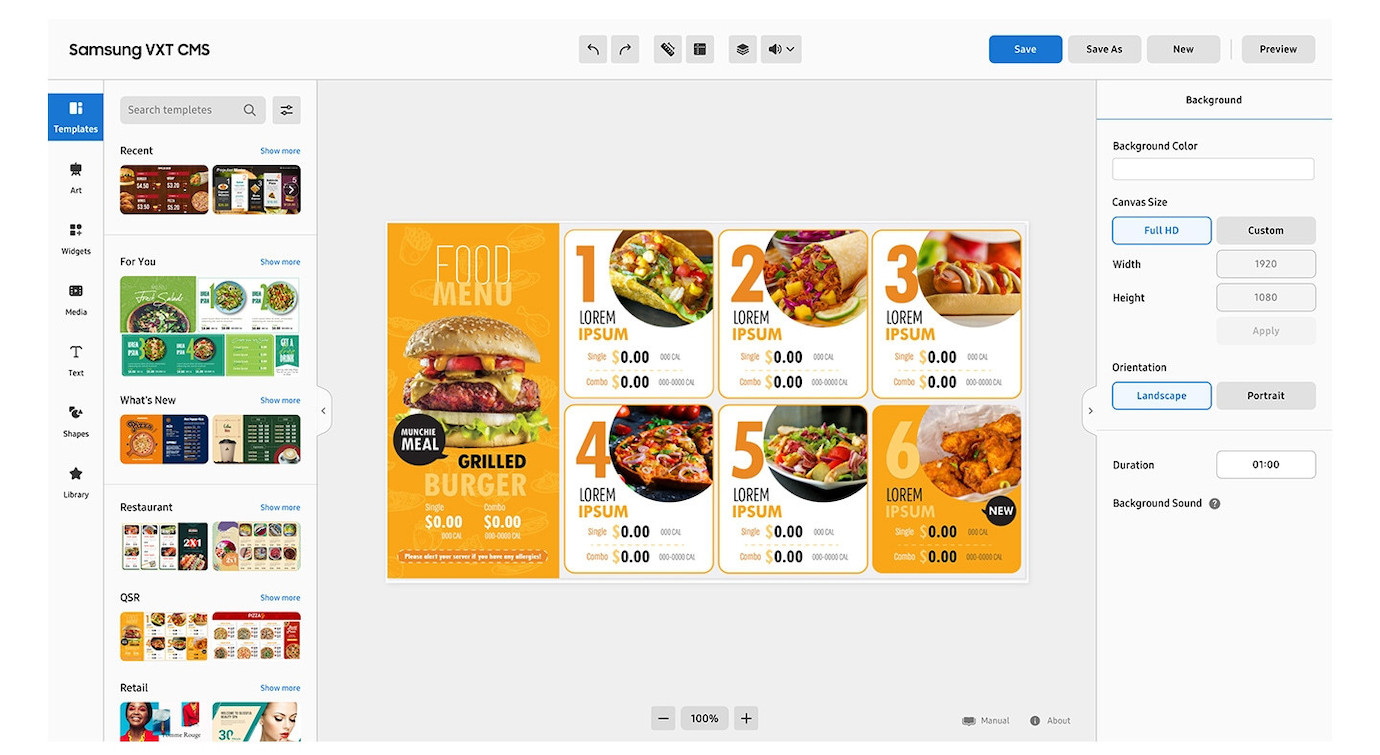
Samsung VXT CMS is a cloud-based platform that integrates both content management and remote control of devices. This allows you to remotely adjust device settings, troubleshoot issues and easily design and distribute content without the need for prior training.
Flexible installation for customised designs
Auto Level
Keep content clear and consistent. Auto Level automatically adjusts content when the screen is rotated from vertical to horizontal for more versatility in any room. It also automatically recognises incorrect swivel directions so the screen always remains correctly aligned.
Technical data
| Name | Samsung QM32C 32" Display |
|---|---|
| Article number | 1000030033 |
| GTIN/EAN | 8806095205007 |
| Manufacturer SKU | LH32QMCEPGCXEN |
| Model name | QM32C |
| Brand | Samsung |
| Product Type | Non-Touch Display |
| Product Series | Samsung QM Series |
| Technology | LCD |
| Panel type | VA |
| backlight | Direct-LED |
| Resolution | 1920 x 1080 Full HD |
| Diagonal | 32" |
| Aspect Ratio | 16:9 |
| Viewing angle - Horizontal | 178° |
| Viewing angle - Vertical | 178° |
| Contrast Ratio | 1,200 :1 |
| Screen finish | Matt |
| Max. Brightness | 400 cd/m² |
| run-time | 24/7 |
| Response time | 8ms |
| Haze Level | 1% |
| Support - VESA | 100 x 100 |
| Frame width | 11.5 mm |
| Inputs | 1x Ethernet , 1x USB-A , 3x HDMI |
| Outputs | 1x 3,5mm Jack |
| Features | Integrated speaker , Portrait Mode |
| Product width | 72.51 cm |
| Product height | 41.96 cm |
| Product depth | 3.46 cm |
| Weight | 5.7 kg |
| Colour | Black |
| EEK Spectrum | A to G |
| Delivery contents | Power cable , Remote control |
| Condition | New |
| Warranty | 36 Month |
| Warranty type | Onsite Repair Service and support information |
Product safety
| Person responsible for the EU |
|---|
| Samsung Electronics GmbH |
| Am Kronberger Hang 6 |
| 65824 Schwalbach |
| Germany |
| sseg.comm@samsung.com |





